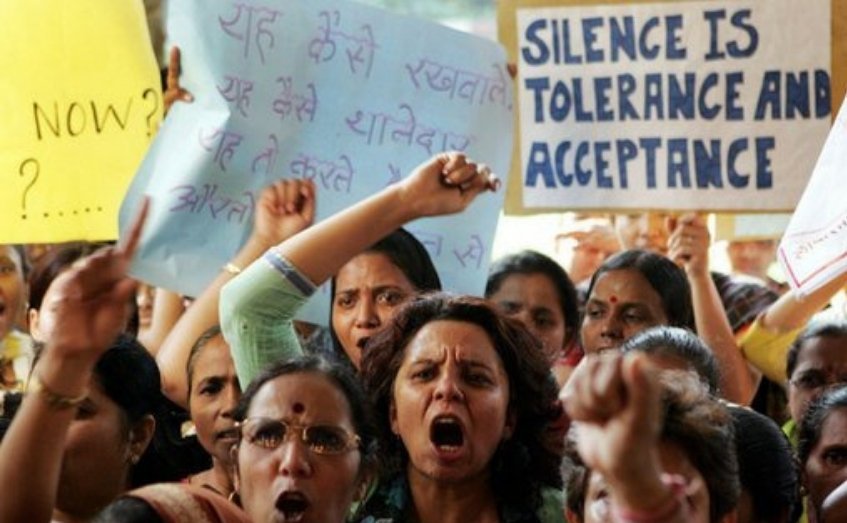Context
The NCRB’s Crime in India 2023 report, released after a year’s delay, highlights key trends, decline in murders, surge in crimes against Scheduled Tribes due to Manipur violence, and rise in cybercrime, reflecting emerging internal security and governance challenges, concerns over data transparency, and gaps in law enforcement and social protection systems.
Purpose of the NCRB Report
- The NCRB annually compiles data from police stations nationwide to provide a statistical snapshot of crimes, victims, accused, and law enforcement performance.
- It forms the backbone of evidence-based policymaking, helping governments assess the effectiveness of justice delivery and identify areas for reform.
- However, these figures require cautious interpretation as state-wise comparisons are unreliable since data depend on levels of reporting and registration, not only actual incidence.
Key Statistical Highlights (2023)
- Overall trends: 2023 NCRB report released after delay, showing shifts in social and digital crime patterns.
- Murder cases: Decreased by ~3% nationally, mostly linked to personal disputes or vendetta.
- Crimes against Scheduled Tribes (STs): Increased by ~29%, mainly due to Manipur ethnic violence (cases jumped from 1 in 2022 to 3,399 in 2023).
- Cybercrime: Increased by ~31%, driven by financial fraud and online sexual exploitation.
- Crimes against children: Increased by ~9% with the offender known in 96% of incidents.
- Crimes against women: Overall increase by 4%, but dowry-related cases surged ~15%.
While a drop in violent crimes like murder indicates improved law enforcement, the rise in socially rooted and cyber-related crimes signals a shifting crime landscape demanding new institutional capacities.
Vulnerable Sections
- Scheduled Tribes (STs): The steep ~29% rise, mainly from Manipur, underlines how ethnic conflict and state failure can escalate violence. High rates in Madhya Pradesh and Rajasthan reveal systemic vulnerabilities among tribal populations in central India.
- Women: The modest overall rise hides worrying trends, particularly dowry-related violence (+~15%). This reflects persistent patriarchal norms and limited deterrence despite legal safeguards.
- Children: Crimes rose by ~9% revealing the need for family and institutional awareness. Application of the POCSO Act in consensual adolescent relationships calls for sensitive handling by police and prosecutors.
Emerging Crime Patterns
- Cybercrime: The most rapidly growing domain, with a ~31% jump, driven by online fraud, impersonation, and exploitation.
- Drivers: Expanding digital transactions and poor cyber hygiene.
- Challenge: Despite more cyber cells, forensic and technical expertise remain inadequate.
- Urban Crimes: Metropolitan areas continue to record higher crime growth due to population density, anonymity, and economic disparity.
- Societal Crimes: Rising atrocities against tribals, dowry deaths, and child abuse indicate deep social and cultural pathologies requiring community reform beyond policing.
Challenges and Way Forward
| Challenges | Way Forward |
| 1. Delayed release of crime data: hampers transparency, accountability, and evidence- based policymaking. | Ensure timely and regular release of NCRB data; institutionalize data audits and strengthen coordination between Centre and States for standardised reporting. |
| 2. Weak forensic and investigative capacity: poor conviction rates and pendency. | Invest in forensic infrastructure, training, and modern equipment; expand digital crime labs and forensic science universities. |
| 3. Rising ethnic and caste violence: reflects lack of preventive governance and early conflict detection. | Develop early warning systems, promote community dialogue, and deploy peace-building and rapid response units in conflict-prone areas. |
| 4. Regional disparities in crime trends: high incidence of atrocities in certain states (e.g., MP, Rajasthan, Manipur). | Implement region-specific policing strategies; enhance state-level monitoring and targeted socio-economic interventions for vulnerable groups. |
| 5. Underreporting and stigma: victims of gender and caste-based crimes avoid legal recourse. | Victim sensitisation campaigns, anonymous reporting mechanisms, and confidential support services; promote gender-sensitive policing. |
| 6. Justice delivery delays and low conviction rates: erode public trust in legal institutions. | Establish fast-track and special courts, strengthen public prosecutors, and ensure time-bound investigation and trial frameworks. |
| 7. Lack of ethical and sensitive policing: secondary victimisation and bias in investigation. | Incorporate ethics, empathy, and human rights training in police curricula; strengthen internal accountability and grievance redressal mechanisms. |
| 8. Limited cybercrime preparedness: inadequate digital literacy and poor response to online fraud/exploitation. | Expand cyber labs, create state-level CERTs, and promote digital literacy among citizens and small businesses. |
| 9. Poor data utilisation in policymaking: NCRB statistics underused for preventive governance. | Implement AI-based crime analytics and predictive policing tools for hotspot identification and resource allocation. |
| 10. Deep-rooted social causes of crime: patriarchy, caste bias, and ethnic divisions persist. | Launch social and educational reforms focusing on inclusion, value education, gender equality, and civic awareness. |
Conclusion
The NCRB 2023 report reflects a changing face of crime in India, from physical violence to digital and social vulnerabilities. While the fall in murders suggests stronger deterrence, the surge in cyber, caste-based, and gender crimes underscores the need for holistic governance that integrates technology, ethics, and social reform. Effective policy must go beyond data, ensuring justice, dignity, and security for every citizen.
| Ensure IAS Mains Question Q. The NCRB 2023 Report highlights India’s shifting crime landscape, from conventional violent crimes to socially rooted and cyber-related offenses. Discuss the key trends revealed by the report and suggest measures to strengthen institutional responses in light of these changes (250 words) |
| Ensure IAS Prelims Question Q. With reference to the Crime in India 2023 report released by the National Crime Records Bureau (NCRB), consider the following statements: 1. The report recorded a decline of around 3% in murder cases nationwide. 2. Crimes against Scheduled Tribes showed a significant rise, mainly due to ethnic violence in Manipur. 3. Cybercrimes decreased due to improved policing and awareness campaigns. 4. Crimes against children often involve known offenders in a majority of cases. Which of the statements given above are correct? a) 1 and 2 only b) 1, 2 and 4 only c) 2 and 3 only d) 1 and 3 only Answer: b) 1, 2 and 4 only Explanation: Statement 1 is correct: The NCRB 2023 data shows that murder cases decreased by nearly 3% compared to the previous year, with most incidents arising from personal disputes or vendetta, indicating a marginal improvement in violent crime control. Statement 2 is correct: Crimes against Scheduled Tribes increased by about 29%, largely attributed to the Manipur ethnic violence, where cases jumped dramatically from 1 in 2022 to 3,399 in 2023, highlighting region-specific ethnic conflict. Statement 3 is incorrect: Cybercrime actually increased by around 31%, driven by financial fraud, impersonation, and online sexual exploitation. Despite more cyber cells, forensic and technical expertise remain insufficient. Statement 4 is correct: In 96% of crimes against children, the offender was someone known to the victim (family, acquaintance, or neighbour), showing the deep-rooted social and domestic nature of such offenses. |
Also Read | |
| UPSC Foundation Course | UPSC Daily Current Affairs |
| UPSC Monthly Magazine | CSAT Foundation Course |
| Free MCQs for UPSC Prelims | UPSC Test Series |
| ENSURE IAS NOTES | Our Booklist |





